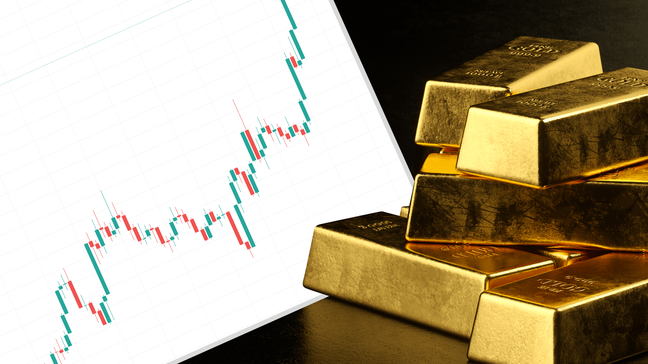The risk complex roils early Friday as Israel’s attack on Iran renewed fears about World War 3. However, Iran’s measured response appears to test the pessimists of late. The risk-negative headlines joined the hawkish Fed bias and the upbeat US data to underpin the US Dollar strength.
The same weighed on the EURUSD amid dovish commentary from the European Central Bank (ECB) officials while GBPUSD failed to cheer optimistic statements from the Bank of England (BoE) due to the mixed economic data at home. Further, USDJPY and USDCHF dropped due to the haven status of the Japanese Yen (JPY) and the Swiss Franc (CHF) whereas Gold prices also remain firmer amid the softer yields and the market’s rush for risk-safety. Additionally, Crude Oil rallies on supply crunch fears whereas AUDUSD and NZDUSD slumps.
Elsewhere, BTCUSD and ETHUSD reverse the previous day’s recovery moves amid broadly downbeat sentiment and consolidation ahead of the April 20 Bitcoin halving.
Following are the latest moves of the key assets:
- Brent oil prints the biggest daily gains in five weeks around $88.80 by the press time.
- Gold price stays on the way to posting a five-week uptrend while posting mild gains around $2,385 at the latest.
- USD Index rises 0.25% intraday to 106.20, preparing for consecutive second weekly gain as we write.
- Wall Street closed mixed but the Asia-Pacific stocks dropped. Further, European and UK shares print losses during the initial trading hour.
- BTCUSD and ETHUSD both drop more than 1.0% intraday to around $63,000 and $3,030 at the latest.
Risk off mood propels US Dollar…
A slew of scattered explosions in the Middle East triggered sour sentiment early Friday. That said, the news rollout appeared slow and Iran’s hesitance to accept any major attacks by Israel challenged the pessimists afterward. It should be noted, however, that S&P lowered Israel’s credit rating from AA- to A+ and kept challenging the risk appetite. Furthermore, the White House said to have an open mind about more Iranian sanctions and the same challenges Tehran from reacting fiercely to an Israeli attack, which in turn limits the risk aversion of late.
Recently, CNN news cited a regional source to turn down the possibility of Iran’s retaliation to the Israeli attacks on Friday. On the same line were the early-day reports suggesting Iranian rejections of a foreign attack on Iranian cities, including Isfahan. Tehran officials were also quoted saying, “There have been no airstrikes, only shot-down quadcopters.”
Additionally, the risk-negative headlines from the People’s Bank of China (PBoC) also allowed the US Dollar to remain firm. The PBoC cited challenges from the dragon nation’s 'one-sided' pursuit of credit expansion to bolster economic growth.
If we take a look at the Federal Reserve (Fed) speakers, Atlanta Fed President Raphael Bostic welcomed the progress on inflation while also saying, “I'd have to be open to increasing rates if inflation stalls out or goes in the other direction.” Further, Minneapolis Fed President Neel Kashkari also crossed wires while saying, “Once inflation is headed back to 2%, the Fed can cut.” However, the policymaker expects the 2.0% inflation for 2025 and hence suggests a delay in the rate cut. Additionally, New York Fed President John Williams appeared too hawkish as he not only turned down the urgency to cut rates but also said, “If data called for higher rates, Fed would hike.”
In addition to the hawkish Fed talks, upbeat US data also allowed the US Dollar to edge higher, especially amid the risk-off mood. That said, the US weekly Initial Jobless Claims reprinted the 212K figures, versus the 215K expected, while the Philadelphia Fed Manufacturing Survey Index for April jumped to the 15.5 mark from 3.2, compared to the market consensus of 1.5. It should be observed that the US Existing Home Sales for March weakened but failed to weigh on the US Dollar.
Against this backdrop, the US Dollar Index (DXY) braces for a second weekly gain while making rounds to the highest level since November 2023. Further, Wall Street closed mixed but the Asia-Pacific shares are in the red. It should be recognized that the Treasury bond yields failed to cheer the risk aversion and printed a daily loss so far on Friday, which in turn challenges the US Dollar bulls and allows the Gold price to remain firmer.
While most of the Fed officials pushed back the rate cut bias and favored the Greenback, the European Central Bank (ECB) policymakers appear to favor a sooner rate cut from the bloc’s central bank and weigh on the Euro (EUR). Starting with the Governing Council Member Olli Rehn who said, “Provided we are confident inflation will continue converging to our 2% target in a sustained way, the time will be right in June to start easing the monetary policy stance and to cut rates.” On the same line, ECB board member Klaas Knot said, “I see a cautious slide in rates after June,” while also citing his discomfort with the market pricing of rate cuts. Furthermore, ECB Vice President Luis de Guindos also said that it is Appropriate to loosen restrictive policy if inflation conditions are met.
In highlighting the US Dollar strength and the dovish ECB bias, the EURUSD fails to justify an upbeat economic assessment from Germany’s central bank, namely the Bundesbank. The German central bank’s monthly economic report mentioned that an unexpected boost from industry and construction likely led to expansion in Q1 2024. However, the report also said, “But there is still no evidence of sustained improvement for the German economy,” which in turn favored the EURUSD bears at the yearly low.
Bank of England (BoE) policymaker Megan Greene does not anticipate a rate cut in the near future, adding, “We expect inflation to return to target in coming months, but don't expect it to stay there.” Her hawkish comments failed to impress the GBPUSD buyers amid the broad US Dollar strength and doubts about the UK’s economic transition, especially after the recent mixed statistics.
USDCHF and USDJPY ignore the US Dollar's strength to drop due to the haven status of the Swiss Franc (CHF) and the Japanese Yen (CHF). Also allowing these currencies to recover were comments from the officials of the Swiss National Bank (SNB) and the Bank of Japan (BoJ).
BoJ Governor Kazuo Ueda sounded hawkish in his latest comments while stating, “There is a chance weak JPY might affect trend inflation and if so could lead to policy shift.” On the other hand, SNB Policymaker Antoine Martin said that Swiss inflation is likely to remain in the zero – 2% range for the next three years.
Furthermore, AUDUSD and NZDUSD bear the burden of the strong US Dollar and pessimism surrounding China while Crude Oil jumps more than 2.0% amid fears of a supply crunch due to the geopolitical tensions in the Middle East.
- Strong buy: USDCAD, USDJPY, US Dollar
- Strong sell: AUDUSD, NZDUSD, GBPUSD
- Buy: BTCUSD, ETHUSD, Nasdaq, Gold
- Sell: DAX, FTSE 100, BTCUSD, EURUSD
Geopolitics, Fed talks eyed…
While headlines surrounding the Israel-Iran war could keep the market players on their toes and underpin the US Dollar’s strength, the last round of the Fed talks ahead of a two-week blackout period will also be important to watch for the market players. That said, most of the Federal Reserve policymakers are in favor of a delay in the rate cut and gain support from the recent US data, which in turn suggests further upside of the Greenback and the same can challenge the commodity buyers while exerting more downside pressure on the GBPUSD and the EURUSD.
May the trading luck be with you!




